
Change was in the air for the park in the 1980s. But many old standards remained. Rainbow Gardens remained a popular destination. While the big bands were long gone, the building became a venue for group picnics and special events. (JF.)
Four
A SMALL PARK GROWS UP
1980S–1990S
In 1978, after years of hard work, Paul Nelson achieved his dream and assumed complete ownership of Waldameer Park. He succeeded in modernizing the facility but knew that he had his work cut out for him if the park would continue to thrive and grow. At the time, Waldameer was located in one of the most competitive amusement park regions in the country. Larger corporate-owned parks were expanding while smaller facilities were feeling pressure in the face of a decline in the industrial base that provided the company picnics that so many parks depended on.
“I wanted a continuation of the park,” said Nelson, wanting to build something that he could pass along to his children. He spoke with his wife, Lane, and came to the conclusion that Waldameer could not survive long term in its current form. It would have to continue growing.
One emerging trend he noticed at the time was the growth of water parks. He saw the addition of one as a logical first step. With the opening of the first phase of Water World in 1986, Waldameer became a pioneer in integrating water attractions with traditional amusement park rides, something now commonplace in the industry. Over the next several years, Nelson worked to build Water World into one of the largest water parks in the state. By the early 1990s, it became time to turn attention back to the amusement park side of the business.
In 1992, a 10-year expansion plan was introduced that would transform Waldameer Park. At the time, Paul Nelson told industry publication Inside Track that he “plans to spend enough money on it that it won’t go and be turned into a housing development.” The rest of the decade was highlighted by constant growth at Waldameer with eight new rides debuting. The park’s reputation was increasing, and it was transforming from a local picnic park into a regional destination. As the 20th century came to a close, Waldameer Park’s best years were still to come.

Change was in the air for the park in the 1980s. But many old standards remained. Rainbow Gardens remained a popular destination. While the big bands were long gone, the building became a venue for group picnics and special events. (JF.)

At the opposite end of the park, the Merry-Go-Round Grove was also a landmark. Erected for the failed attempt in the 1920s and 1930s to move the carousel and spread out the park, it was pressed into service as a picnic pavilion, a role it continues to play. (JF.)
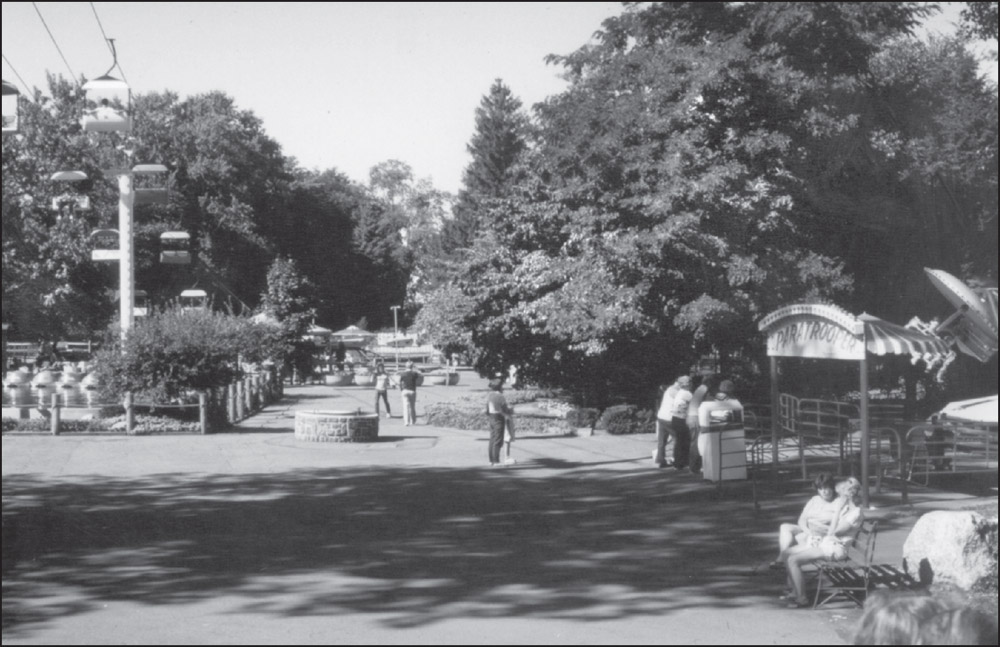
A quiet day on the midway in 1985 provides no indication of how much the park would change over the next decade and a half. The Paratrooper and Sky Ride are the only attractions visible in this picture. They would soon be joined by many others. (JF.)
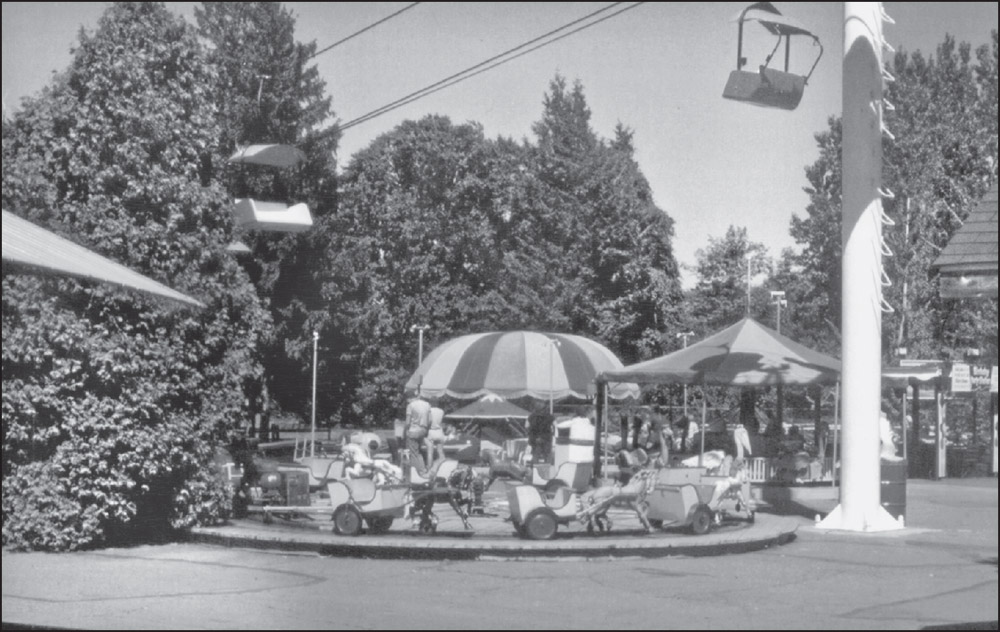
Since the 1950s, the kiddie land served as an anchor for the northeast corner of the park. The classic pony cart ride, shown in the foreground in 1985, is still part of today’s expanded offerings. (JF.)

In 1984, Waldameer Park replaced its kiddie turnpike ride with the bumper boats. Like bumper cars on water, it provided a cooling ride on a hot summer day. The bumper boats would turn out to be the last major ride added during the 1980s as the park had other plans in mind. (JF.)
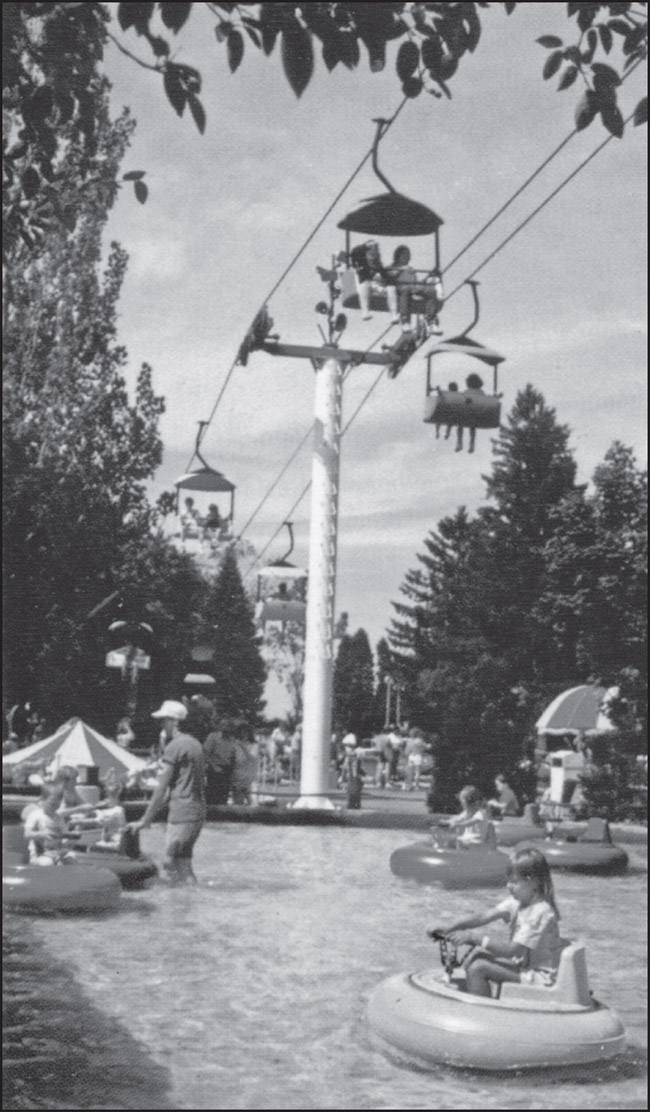
Waldameer Park did not leave its smaller customer out in 1984, adding the Lil’ Sneak, a kiddie bumper boat ride on the midway. (WP.)

In 1986, the park undertook a project that would transform it forever. Water slides had been around since the mid-1970s but had only just started to be added to traditional amusement parks. Waldameer was a pioneer in adding waterslides to its traditional offerings. Here, construction is well under way in early 1986. (WP.)

Initially, the new water park, dubbed Water World, was a modest operation with just two waterslides and several activity pools. But it was an immediate hit, with visitation increasing dramatically. To accommodate the additional crowds, five additional waterslides were installed in 1989. (WP.)

Included in the 1989 expansion were the free-fall and speed slides, which unlike the more winding slides previously installed, provided a straight drop into a pool at a high rate of speed. (WP.)
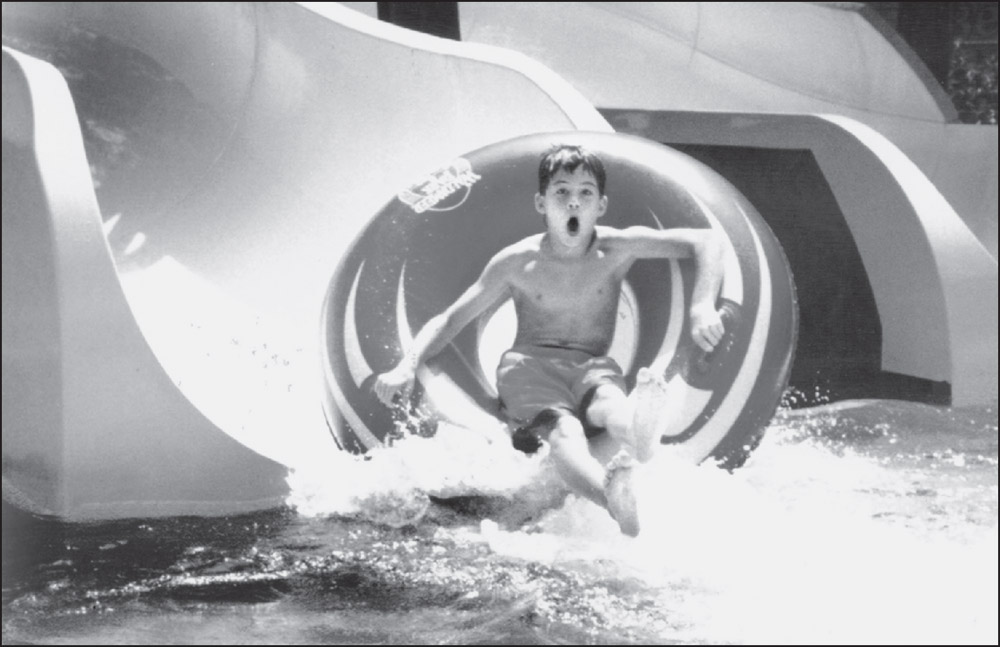
Water World opened at just the right time. With water-based attractions sweeping the amusement park industry, it changed the identity of Waldameer Park. Like the early years, when the beach was in operation, it again became the place in Erie to cool off on a hot summer day. (WP.)

In 1990, development of Water World continued with the opening of Bermuda Triangle, a 47-foot tall three slide complex. (WP.)
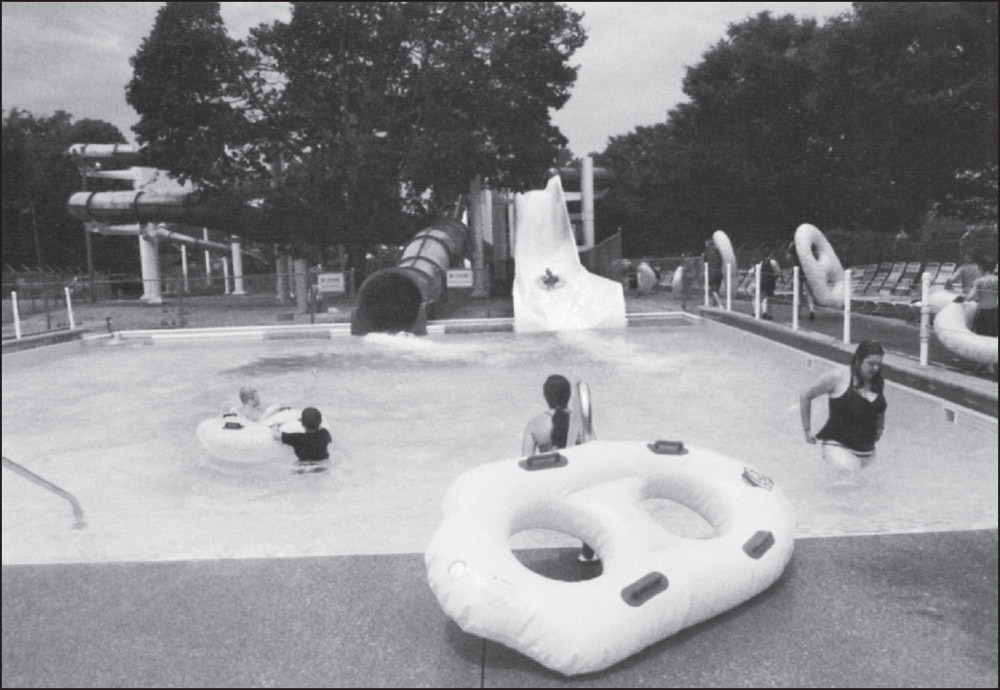
The $4-million development of Water World culminated with the additions of the Awesome Twosome (left), which opened in 1991, and the Midnight Plunge (right), a trip in complete darkness, which debuted in 1992. (WP.)

By the early 1990s, Water World had grown into one of the largest water parks in Pennsylvania, featuring 11 waterslides, a lazy river, and several activity pools. It had totally transformed Waldameer Park, increasing business dramatically. (JF.)
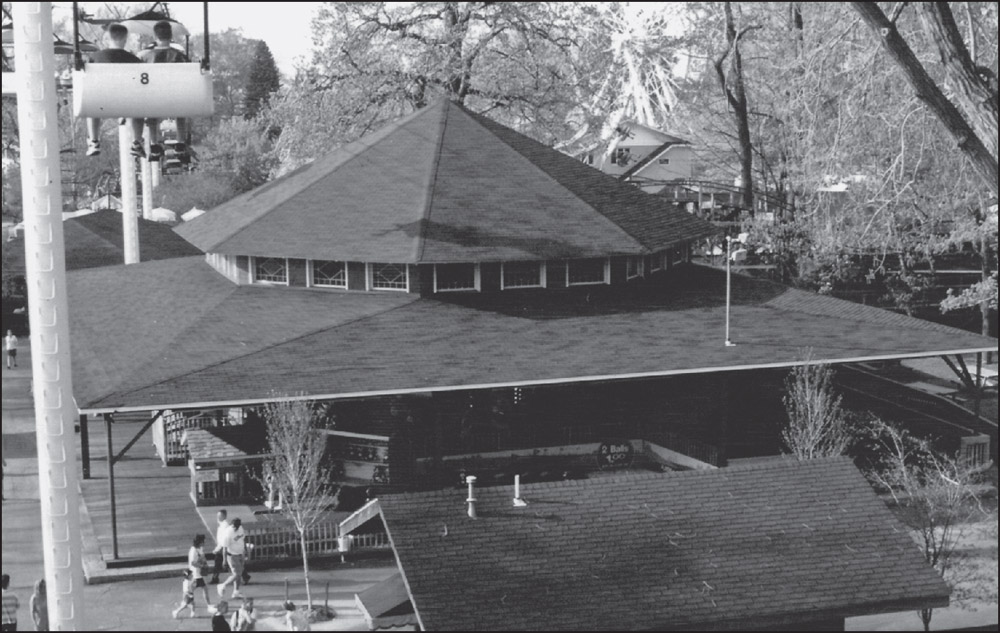
Development of Water World did not come without sacrifices. In the 1980s, collectors were driving prices for antique carousel animals to record highs. As a result, the park decided to auction its carousel animals and frame following the 1988 season. Over $1 million was raised in the auction, all of which was invested back into expanding Waldameer Park. (Both, JF.)

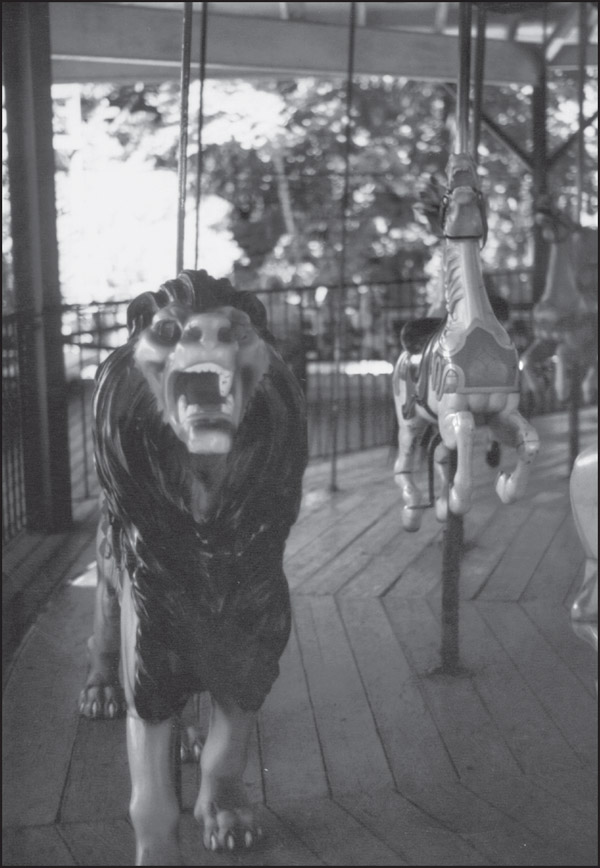
The carousel had been in operation at Waldameer Park since 1905. In addition to the standard horses, it included a number of other animals such as a lion and a one-of-a-kind elephant that people could sit inside. So while the departure of the ride was sad from a nostalgic perspective, the money invested from the sale did help to guarantee the future of the park. (Both, JF.)

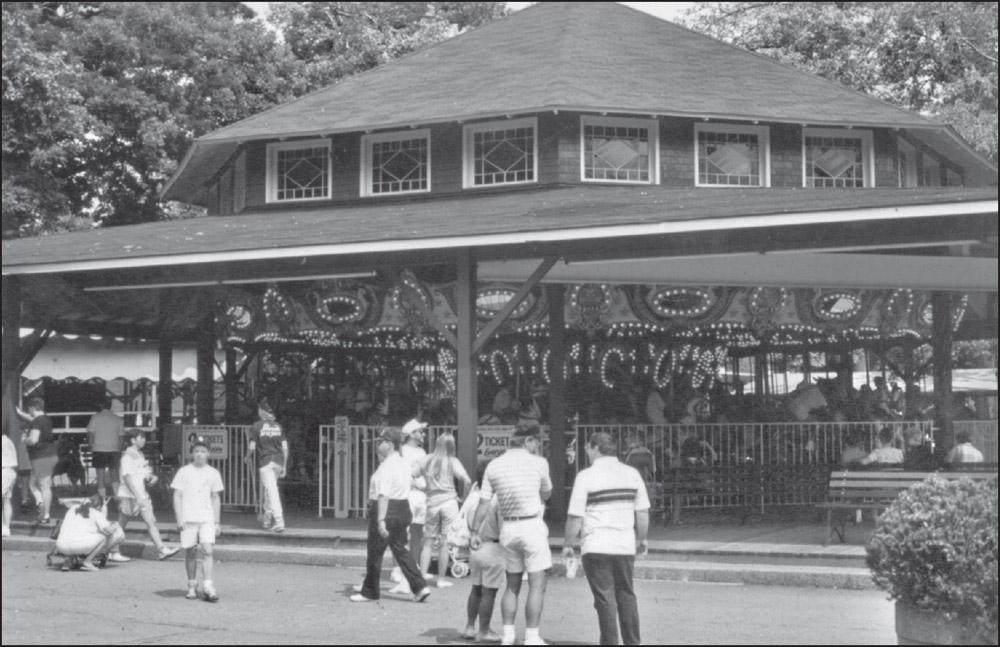
While most of the proceeds for the auction were invested in the continued growth of Water World, a portion was invested in restoring the old carousel building and purchasing a new merry-go-round. Dating back to 1905, the carousel pavilion is the oldest structure in the park. As part of the project, stained-glass windows were installed in the clerestory around the top of the building. (JF.)
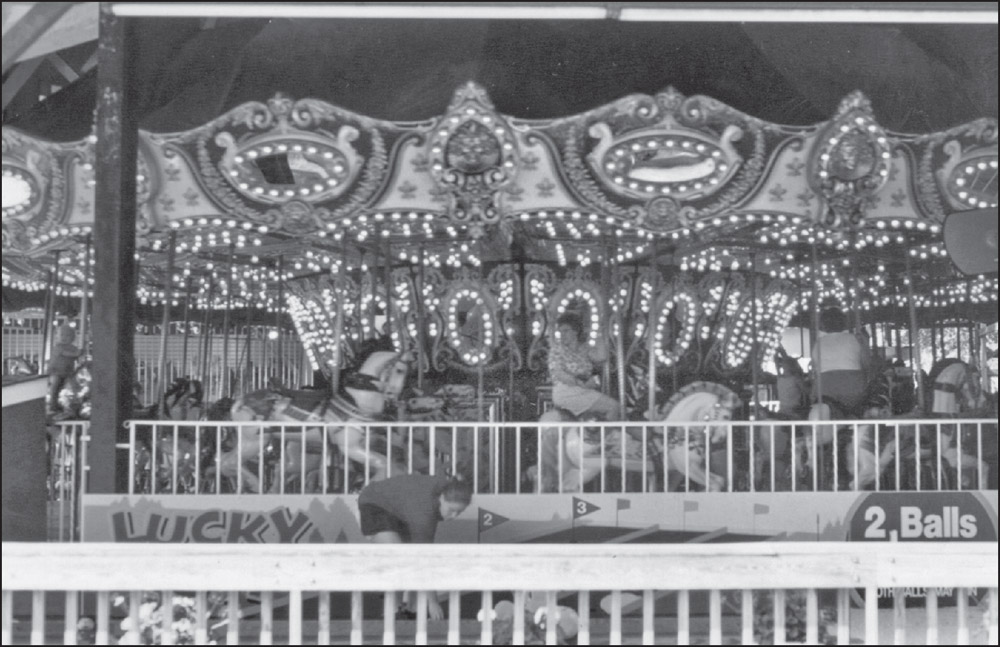
The new merry-go-round features 60 horses, all of which jump up and down. Chance Rides of Wichita, Kansas, one of the world’s leading manufacturers of merry-go-rounds, manufactured it. (JF.)
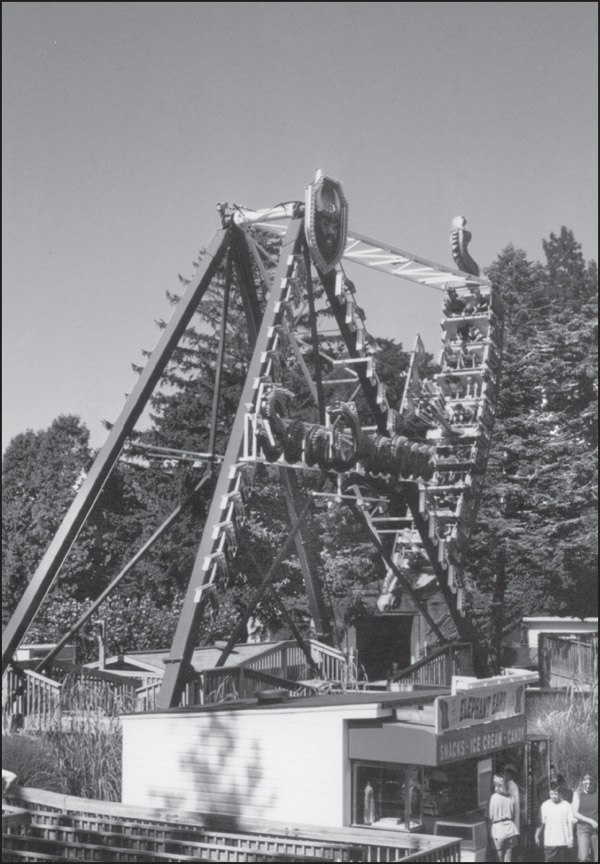
A 10-year expansion of the traditional amusement park was announced in 1992. The first new ride added was the Sea Dragon, a swinging ship ride manufactured by Chance Rides. It was installed in a previously undeveloped area next to the Sky Ride. (JF.)

Waldameer had been without a Ferris wheel since the late 1950s, and the park resolved that in 1994 with the addition of the Giant Wheel. Also manufactured by Chance Rides, the 100-foot-tall wheel was placed on a platform built above the bumper boat pond. It stood 180 feet above the surface of Lake Erie, providing a spectacular view of the lake and the nearby Presque Isle peninsula. (JF.)

The addition of the Sea Dragon and Giant Wheel transformed the skyline of Waldameer Park and brought new life to the formerly sleepy northeast corner of the park. (JF.)
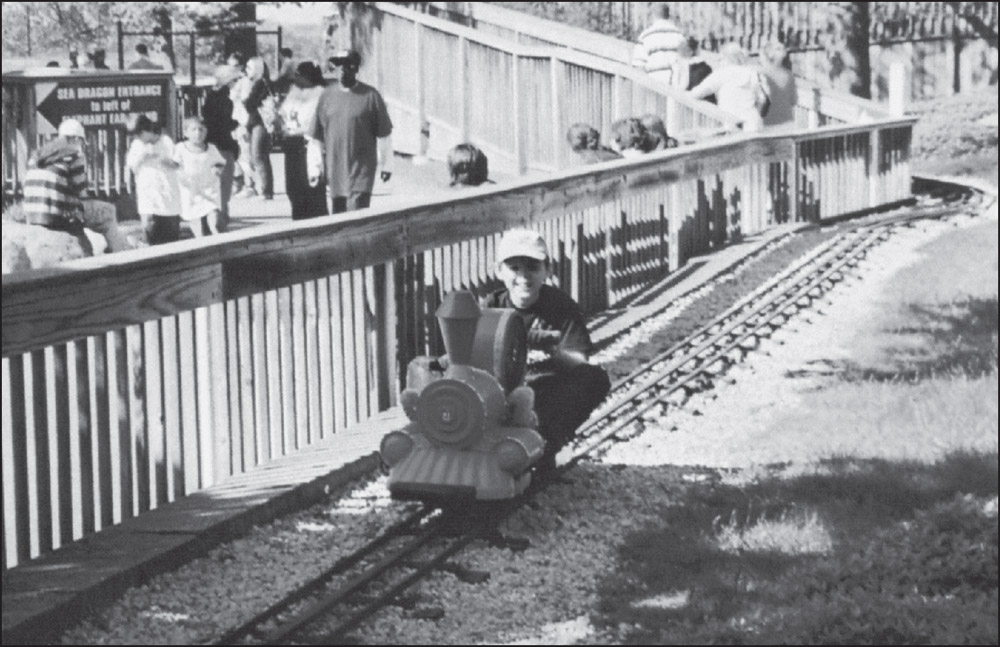
Children were not forgotten as the park grew. The Little Toot was added at the base of the Giant Wheel in 1994 as part of the kiddie land. Manufactured by Alter Enterprises of Pompton Plains, New Jersey, the ride is an updated version of the classic handcar ride found in the 1950s at amusement parks throughout the country, including Waldameer. (DH.)

Waldameer Park again returned to Chance Rides in 1995 to add the Wipeout. The high-speed ride has a wobbling motion that resembles a coin as its spinning slows. Wipeout replaced the Flying Coaster. (WP.)

As Waldameer Park started making plans for its 100th anniversary, it became apparent that the Mill Run was due to be replaced. While a nostalgic link to the past, the ride was nearly 70 years old and lacked modern safety features and the thrills the public was looking for. (JF.)

The Mill Run was a sedate ride through the wooded portion of Waldameer Park with a small drop part of the way through. (JF.)
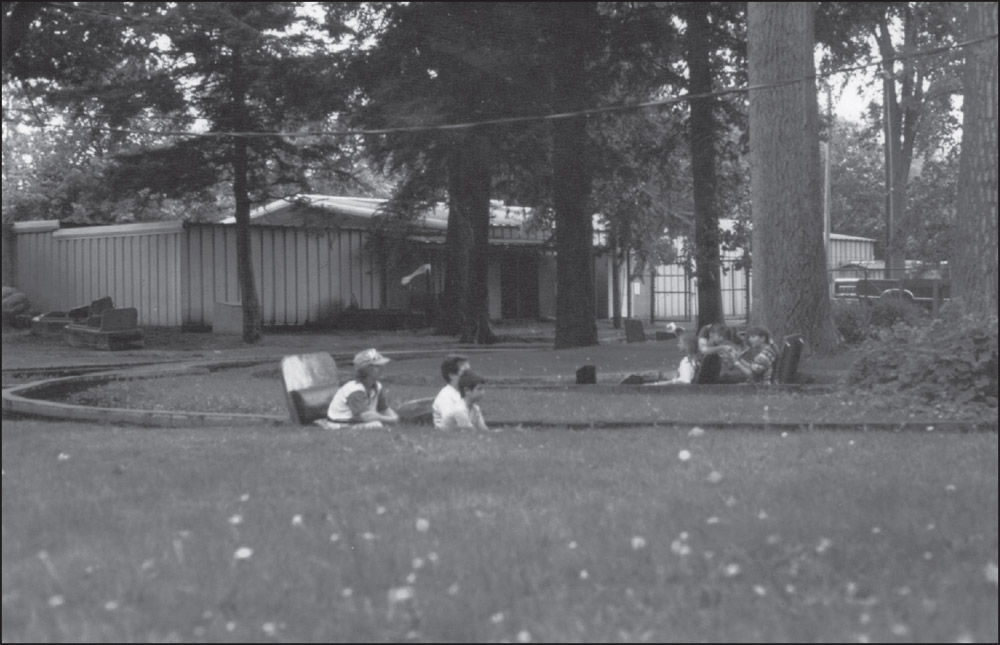
In addition to being dated, the Mill Run occupied a great deal of space with its cement troughs meandering through a grassy area behind the midway. It was space the growing park needed for more productive uses. (JF.)
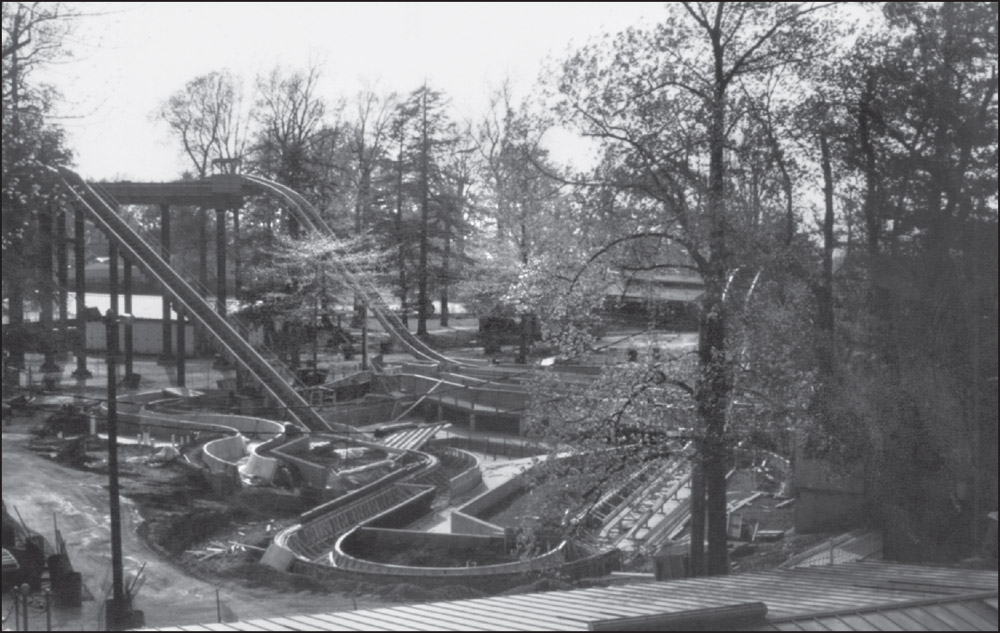
Once the decision was made to replace the ride, a log flume was the natural choice. To provide the ride, Waldameer turned to O.D. Hopkins, who also built the Sky Ride. At the time, the company was the world’s leading manufacturer of water rides. Soon, a large portion of the park was cleared for construction. (JF.)

The $2.5-million ride was named Thunder River and features a 1,300-foot-long trough, a “storm tunnel,” and two splashdown hills standing 25 and 40 feet tall. In a link to the past, portions of the waterwheel from the original Mill Run was restored and incorporated into the new attraction. It can be seen in the center of the photograph above. (WP.)
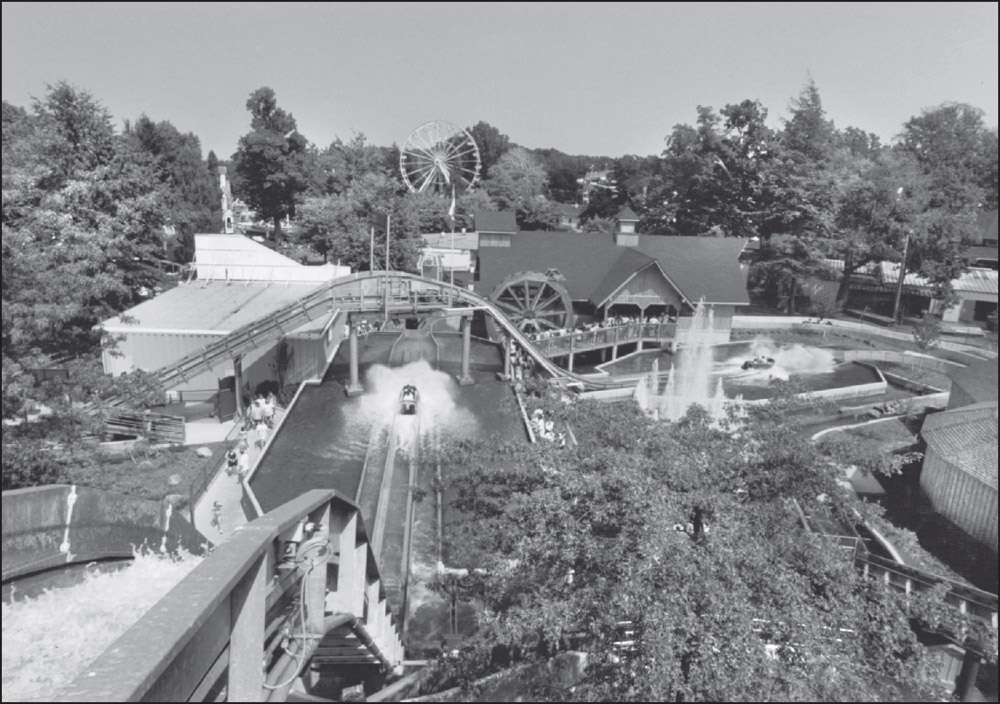
The completed Thunder River was an instant hit and immediately became one of the most popular rides in the park. It was also just the sort of large, high-profile ride needed to demonstrate that the park was on the move. (WP.)
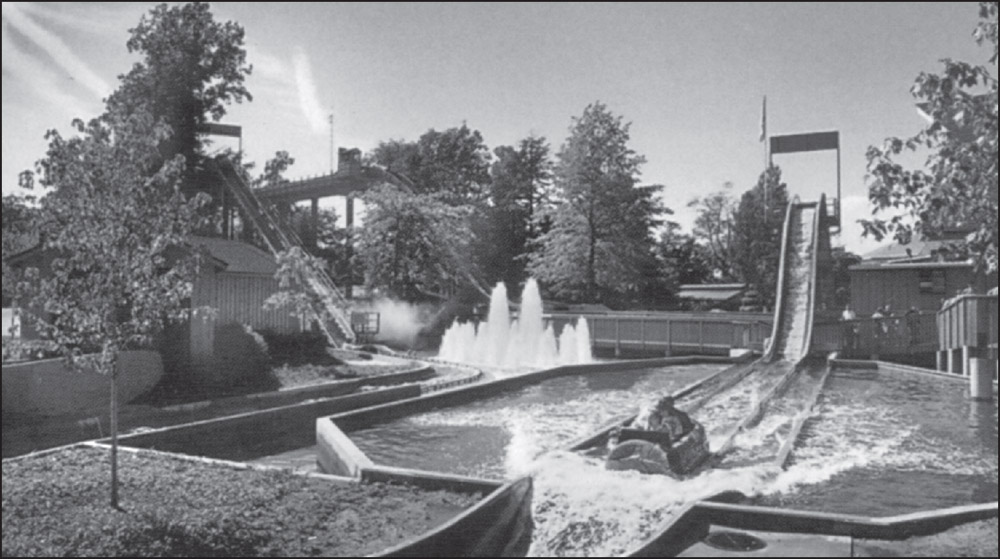
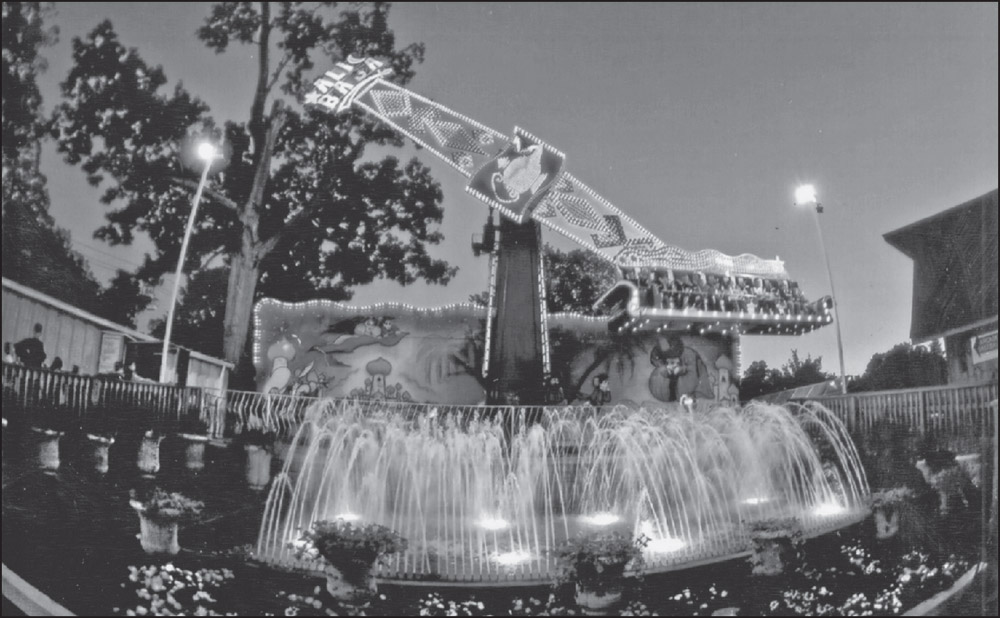
The removal of the Mill Run also provided room for additional attractions. In 1999, Waldameer spent $500,000 to add the Ali Baba. Built by A.R.M. of Wintersville, Ohio, the ride is also known as a flying carpet that sends riders in a towering circular motion, providing thrills and a great view at the same time. (Both, WP.)
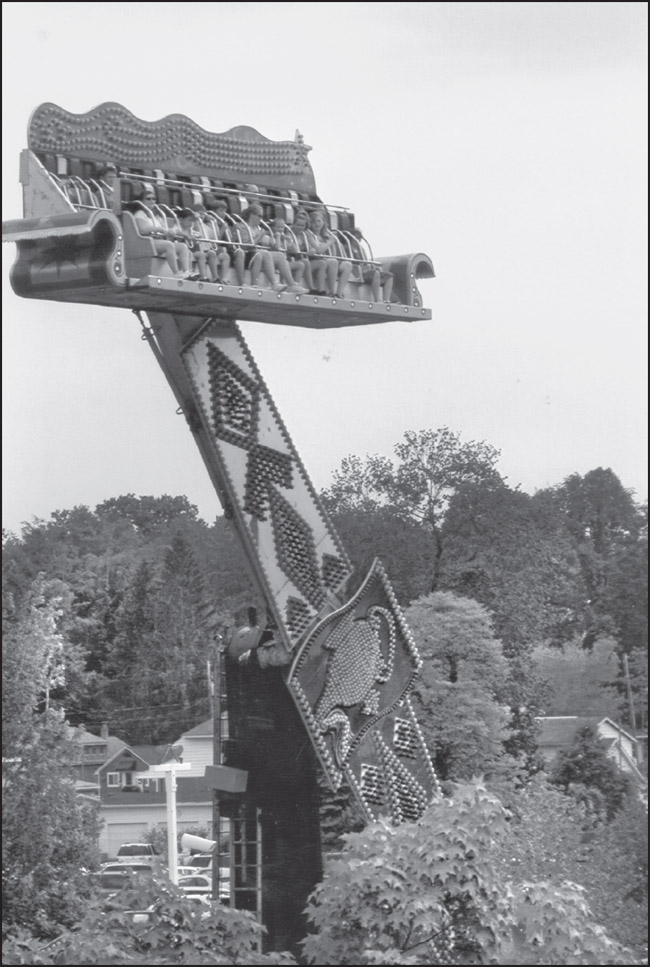

Along with the Ali Baba, the park continued to upgrade its kiddie offerings with the addition of two new attractions. In the kiddie land, the Frog Hopper debuted. Built by S&S Worldwide of Logan, Utah, the ride takes children up a 25-foot-tall tower and sends them back to the ground in a bouncing motion. It has become one of the most popular kiddie rides in the industry. (JF.)

Nearby on the main midway, the Big Rigs replaced the Lil’ Sneak. Built by Zamperla International of Italy, Big Rigs provides families the opportunity to ride in miniature trucks. Waldameer placed it in a lushly landscaped garden. (DH.)
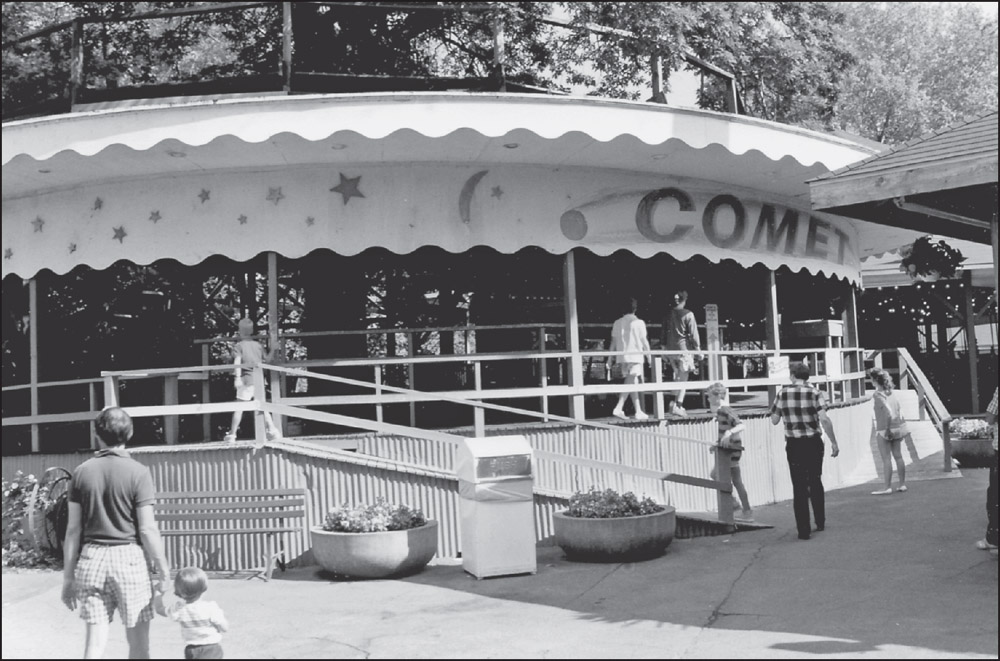
Despite all the changes at the park, the Comet continued to be its only roller coaster. Its family-oriented design appealed to a wide array of riders, but management knew that the roller coaster lineup would have to grow to serve the larger crowds flocking to the park. (DH.)

When the 10-year plan was announced in 1992, the intent was to complete it with the construction of a new wooden roller coaster that would re-create, at least in spirit, the original Ravine Flyer. To be called Ravine Flyer II, Waldameer placed a deposit with Custom Coasters, Inc., in 1993, and planning began. By 1996, a model of the proposed ride was being shown. (JF.)